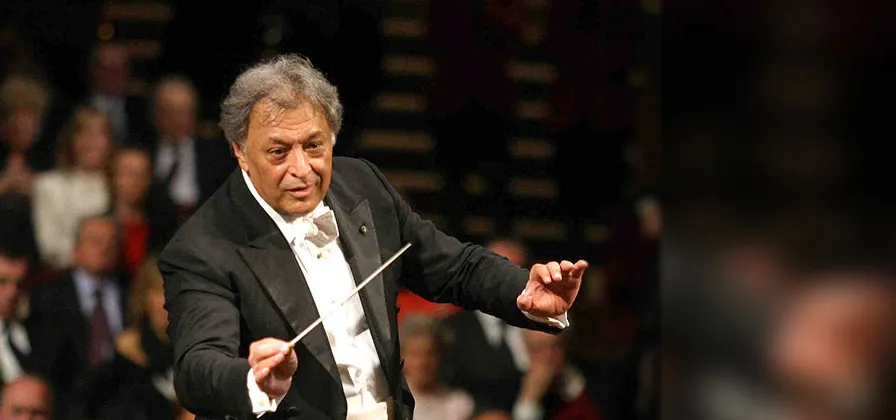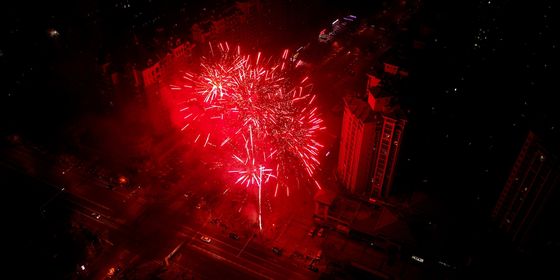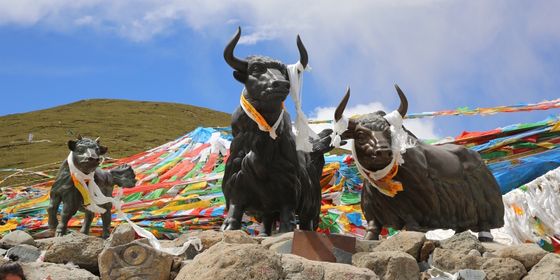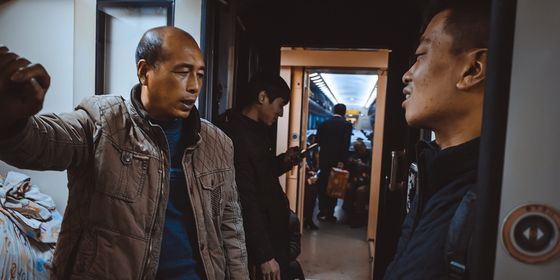CCTV’s live broadcast of the Vienna New Year’s Day concert has been a Chinese tradition for 30 years
As the annual CCTV Spring Festival Gala shows, reclining with food and family in front of a music-based extravaganza on TV is the default ritual for ushering in the new year in today’s China. In 1983, the year the gala was broadcast for the first time, the variety show format was new to Chinese audiences and the program was one of the few entertainment options available on TV. With a format that appealed to the optimism of the post-Reform, entertainment-hungry society, and that also fitted with the theme of literal and symbolic family togetherness during the Lunar New Year, the show quickly rose to become what CCTV called a “new folk custom.”
In 1987, another new year ritual made its way onto Chinese television when CCTV obtained rights to broadcast the annual (solar) New Year’s Day Concert of the Vienna Philharmonic Orchestra. Arguably the most important event in classical music in the world, broadcast by more than 90 TV stations around the world from the Golden Hall of the Musikverein in Vienna, this year was the 30th anniversary of the concert’s emergence as an annual Chinese tradition (the broadcasts were only interrupted once, in 1990, for reasons unclear). For CCTV, it also represented the next step in the development of the television industry in China’s Reform and Opening Up era, as China market liberalization was inevitably succeeded by globalization.
“It was from that year on that many Chinese people knew that in far-off Vienna, Austria, there was a resplendent golden hall, and there, on New Year’s Day each year, there was a magnificent concert,” host Liu Fangfei intones at the start of CCTV’s 12-part documentary “Golden Memories,” looking back at the station’s broadcast of the concert from 1995 to 2016. “It was from then that Chinese audiences and classical music formed an inextricable bond.” In her private reminisces to People.cn, however, Liu presented her memory of the concert from another angle. “I was in primary school, and on New Year’s Day I’d hurriedly finish my homework and go to my grandmother’s house to watch TV…I had to be there before 6 because a wonderful concert was about to start.”
The documentary collects the voices of Chinese musicians, dancers, music scholars, and regular members of the audience to find out what the concert meant to China when it was first broadcast. “It was a riot, it was just festive, it was great,” says musician Xiao Ke. “At the time you felt like you’d never heard such a lively, exquisite concert before,” says television host Wang Xuechun. “It was in 1992, when maestro Carlos Kleiber conducted, I was struck by the professionalism of his movements, the nuances…his almost perfect interpretation of music,” recalls conductor Li Xincao. Having previously encountered symphony concerts through only tapes and radio broadcasts of foreign orchestras invited to perform in the capital, the Chinese public embraced their new New Year tradition with an appreciation for the spectacle as much as a yearning to take part in a venerable musical tradition with global standing and a storied legacy of over 150 years.
The concert was conveniently positions for adapting to Chinese festive tastes. “Golden Memories” that “music, the common language of humankind, was suited better than anything else to be a bridge of East-West cultural exchange” in a China that was “just beginning to open up, eagerly yet cautiously accepting outside perspectives and cultures”; what must have been left unsaid there was also classical music’s relative lack of political baggage and inaccessible cultural nuance, as far as importation of artistic traditions goes. The aristocratic ornateness of the Golden Hall as well as the lilting, romantic (or as critics say, conventional and inoffensive) melodies of the concert’s Strauss family-centric repertoire also coalesced with the idealization of all things European in late 1980s Chinese pop culture. As American writer Sheila Melvin notes, the staging of the concert “teeters on kitsch, interspersed with images of doe-eyed ballerinas prancing up palatial staircases and costumed dancers waltzing in glimmering ballrooms. It was, in other words, perfect for 1980s China.”
Moreover, as the concert was held in Vienna at noon, time difference made it so that CCTV’s live broadcast took place at 6 p.m. Beijing Time on New Year’s Day, ideally timed for Chinese families to assimilate to their ritual of enjoying music and spectacle before a holiday feast. “It just happened to be a Sunday the first year it was broadcast live, and everybody was around,” said Wang in “Golden Memories,” referring to the year 1989 (the two previous years’ broadcasts had been taped and edited). “We could just watch it on TV, at home, and it was the whole family watching together.”
Closing each year with the buoyant “Blue Danube” and rousing, participatory “Radetsky March” (during which the maestro always invites the audience to clap along, and conducts them too), the concert also has a familiarity and sense of timelessness crucial to ritual-making in China as well as in Europe. As in Europe, Chinese fans of the concert also anticipate for the selection of the concert’s conductor each year (often wondering if any Chinese conductor would ever become skilled and famous enough for the honor), and certain celebrities and other wealthy patrons of the arts have participated in the insanely competitive (but prestigious) drawing for tickets to hear the concert in person.
With television no longer a rare luxury in Chinese homes, and as the public begins to demand more entertainment options and Chinese cities try to improve their facilities for the arts, live concerts by Chinese and foreign orchestras have now become an annual event during the December-January holiday season. Melvin compares this to American holiday tradition of staging The Nutcracker and notes that at least prior to President Xi Jinping’s anti-corruption drive, any orchestra, regardless of reputation, could bring in a pretty full house by slapping the words “Vienna” and “New Year” in the name of the orchestra or the performance. Like the concert on TV, these performances almost all close with encores of “The Blue Danube” and “Radetsky March”; as loyal viewers and attendees note on the Vienna Concert’s fan forum on Baidu, it “doesn’t feel right to enter the New Year without clapping it in to the sounds of ‘Radetsky March.’”
The government is now promoting its own version of the New Year’s Concert around the world, held during the Lunar New Year season by Chinese orchestras traveling to abroad or by foreign orchestras with collaboration from the Ministry of Culture and Chinese guest musicians and conductors. Unlike the Strauss and Austria-centric Vienna concert, these programs consist mostly of Chinese folk and modern classics such as “In Praise of Cattle,” “The Butterfly Lovers,” and the “Spring Festival Overture,” with some Western orchestral scores thrown in. But in some countries, these “Happy Chinese New Year” concerts also often close with “The Blue Danube” and “Radetsky March.”
But perhaps it’s only natural that, having cemented the tradition of Vienna New Year’s Concert with Chinese characteristics in China, Chinese New Year cannot leave China without acquiring Viennese characteristics as well.
Cover image of maestro Zubin Mehta, who has conducted the concert five times since 1990, from Soomal.com












